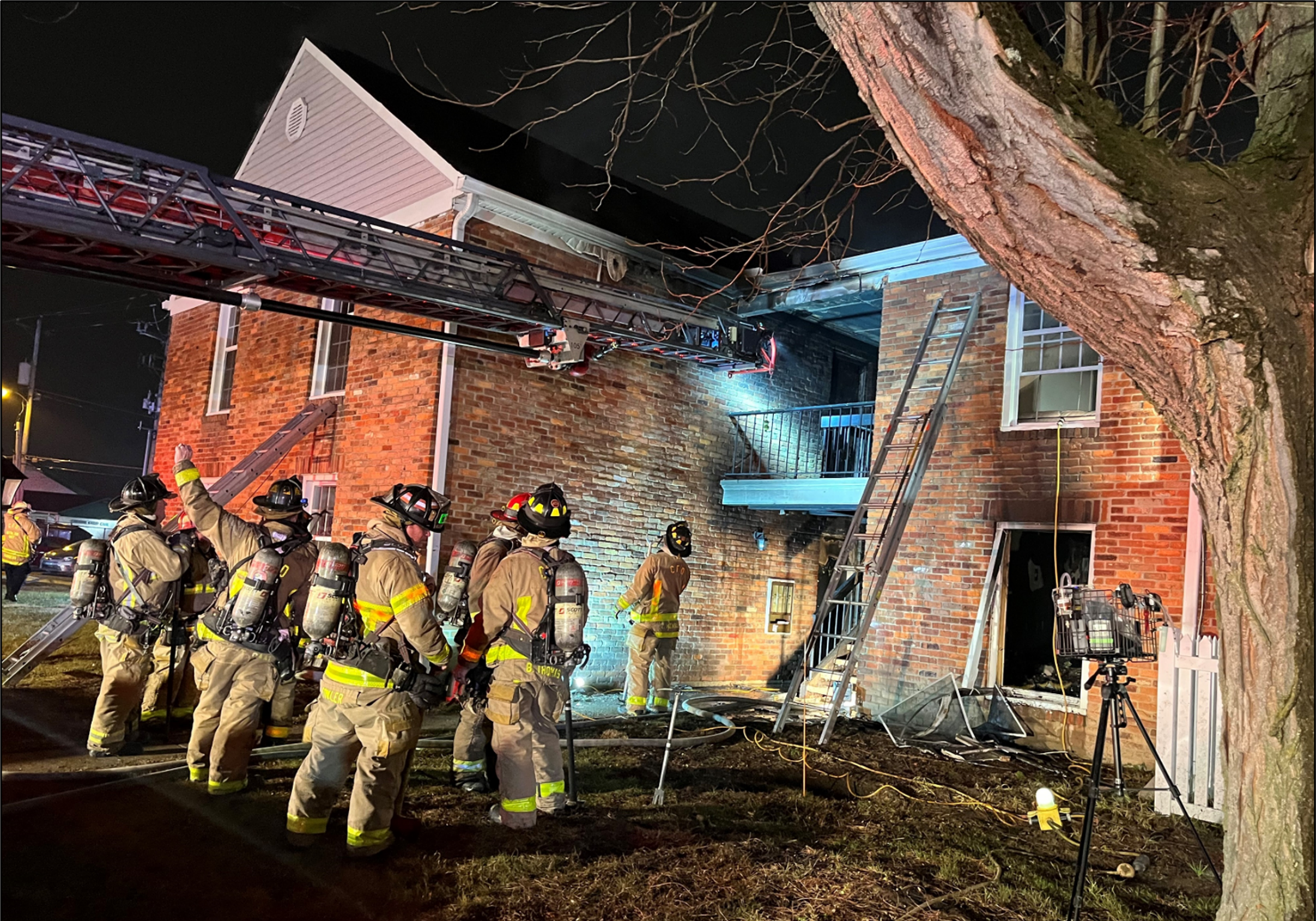Keeping Emergency Responders Safe: NIOSH Efforts Since 9/11
Posted on by

On September 11, 2001, nearly 3,000 people lost their lives and thousands were injured during the events that occurred at the World Trade Center (WTC) in New York City, New York, the Pentagon in Arlington, Virginia, and the plane crash in Shanksville, Pennsylvania. It’s estimated that more than 400,000 people were exposed to harmful contaminants, risks of traumatic injury, and physically and emotionally stressful conditions in the following days, weeks, months, and years.[1] These included emergency responders, clean-up personnel, and non-responder populations of persons who lived, worked, or went to school in surrounding communities.
The events of 9/11 and the resulting impact highlighted the need to protect emergency responders who keep our nation’s citizens and communities safe. Since that day, the National Institute for Occupational Safety and Health (NIOSH) has worked to address this need by managing or creating programs that directly support responders and survivors of 9/11 and improve our response to future emergencies and disasters. Our research efforts and activities help protect responders from harmful exposures and help us to better understand the unique exposures and risks they face.
As we remember those impacted by the tragic events of 9/11 and close out National Preparedness Month, we wanted to share examples of NIOSH research and prevention efforts undertaken since 9/11 to keep emergency responders safe.
Programs that Support Emergency Responders
WTC Health Program
Responders at the WTC, Pentagon, and Shanksville, as well as survivors in the New York City disaster area continue to struggle with the physical and emotional health challenges stemming from their exposure to dust, debris, and the traumatic events of 9/11. Over 84,000 people have been diagnosed with physical and mental health conditions resulting from their exposures.
After a nearly decade-long effort by 9/11 health advocates, the James Zadroga 9/11 Health and Compensation Act of 2010 established NIOSH’s WTC Health Program. In 2015, the Program was reauthorized, ensuring its continuation through 2090. The Program provides no-cost medical monitoring and treatment for certified WTC-related health conditions to those directly affected by 9/11. It also funds research that identifies and examines emerging conditions as well as treatment and diagnostic uncertainty. Recently, the Program funded research that included topics such as breast cancer and dementia.[2][3] This research helps provide a pathway to improve healthcare for people afflicted from 9/11 exposures.
As of September 2024, over 130,000 members are enrolled in the WTC Health Program. The Program provides members with specialized care that is unique to their exposures and experiences as 9/11 responders and survivors. It also provides ongoing resources, training, and best practices in the diagnosis and treatment of 9/11 associated diseases to ensure members receive high-quality medical care from Program providers. If you’re interested in becoming a member, the WTC Health Program provides steps on how to apply. Each time we work with a member to receive vital medical treatment for their 9/11-related health condition, we are reminded that thousands still confront these conditions two decades later.
Emergency Preparedness and Response Program
The unprecedented events of 9/11 alerted NIOSH of the need to establish an office to coordinate emergency preparedness and response activities across the Institute to improve our ability to respond to future emergencies and disasters.
In 2002, NIOSH established the Emergency Preparedness and Response Program to help ensure adequate representation of occupational safety and health knowledge in the changing landscape. The Program now includes an all-hazards emergency preparedness and response focus which includes covering natural as well as chemical biological, radiological, and nuclear (CBRN) disasters. In 2003, NIOSH established the Emergency Preparedness and Response Office which functions as the coordination point for the Emergency Preparedness and Response Program and all relevant NIOSH activities.
To address the need for health monitoring and surveillance of emergency response and recovery workers, NIOSH collaborated with federal agencies, state health departments, and labor unions to create the Emergency Responder Health Monitoring and Surveillance (ERHMS) framework in 2012. ERHMS allows organizations to monitor emergency responders’ health and safety throughout critical phases of a response. The framework aims to prevent short-term and long-term illness and injury in emergency responders and to ensure workers can safely and effectively respond to future emergencies. However, there are still gaps in our knowledge about exposures and health effects.
In 2015, NIOSH created the Disaster Science Responder Research Program (DSRRP) to identify research gaps for emergency response and recovery workers, inform research approaches during disasters, and help prioritize timely research during public health emergencies. Working hand in hand with emergency responders, DSRRP can facilitate relevant research during responses. Response agencies can then use these findings to support the responders whose health they are monitoring using the ERHMS framework.
Protecting Emergency Responders from CBRN Agents
In New York City, Arlington, and Shanksville, firefighters, police officers, construction workers, communications workers, emergency medical services personnel, and a wide variety of other workers and community volunteers were exposed to different chemical, physical, biological, and other hazards. Response and recovery efforts at the WTC site lasted almost a year, prolonging responders’ exposures to known and potential cancer-causing agents.
NIOSH developed the Emergency Response Safety and Health database to keep emergency responders informed about high-priority chemical, biological, and nuclear agents they could encounter during a terrorist event. The database aims to:
- Rapidly disseminate information to responders on specific agents that may be used in terrorist events and that pose an occupational hazard of injury, illness, and death.
- Provide information to incorporate into emergency response operation management systems to reduce work-related injuries and illnesses.
- Provide information that may be used in continuing education and training programs.
Each database entry includes information about the chemical’s health effects, occupational exposure limits, personal protective equipment (PPE), decontamination of humans and equipment, and other key information. Currently, the database contains 40 chemical agents including fentanyl, sarin, and sulfur mustard. NIOSH is assessing information about additional priority chemicals that may be added to the database in the future.
Improving Personal Protective Equipment
On 9/11 and the months following the event, emergency responders relied on PPE for protection against respiratory and CBRN hazards. While NIOSH began efforts in 1999 to research the specific needs of responders to terrorist events, the WTC response operation highlighted additional needs and accelerated standards development. NIOSH partnered with impacted parties and RAND Corporation to assess the range of areas in which advancements were needed to protect emergency responders. NIOSH developed a systematic approach to:
- Identify hazards that responders would face,
- Assess the capabilities of current respiratory protection to provide protection against viable threats using benchmark testing, and
- Set certification standards that expand the capabilities of PPE to enhance the protection offered to responders during chemical, biological, radiological, and nuclear (CBRN) events.
NIOSH, in collaboration with over 100 federal and nongovernmental partners, developed and implemented NIOSH CBRN respirator performance criteria and standards that catalyzed the development of respirators with CBRN protections appropriate for use in various emergency response situations. These efforts invigorated manufacturers to develop CBRN respirators leading to the availability of a national inventory of over 400 NIOSH Approved® respirators with CBRN protections. NIOSH also published the NIOSH CBRN Respiratory Protection Handbook in 2018 to provide selection, use, and maintenance information for CBRN respirator users and respiratory protection program administrators.[4]
These new criteria and standards resulted in improved performance, reliability, and safety of respirators used by emergency responders.
Understanding Firefighters’ Occupational Exposures and Risks

The aftermath of 9/11 brought to light many of the exposure risks that emergency responders, including firefighters, face. While there are over 1 million firefighters in the United States who protect our homes and communities, much remains unknown about their exposures and the potential health effects.[5] NIOSH has undertaken several innovative research projects to help better understand the contaminants firefighters are exposed to, how the contaminants enter and leave the body, and the demographics of those affected. Results of these efforts aim to better characterize the diverse respiratory hazards firefighters are potentially exposed to and may generate more evidence to support increased use of respiratory protection.
In 2022, NIOSH began working with the Columbus Division of Fire to sample respiratory hazards at active structure fires. Inhalation exposures can change based on the combustion by-products of the structure fire, making them unique to each fire response. These exposures can potentially contribute to adverse health outcomes, including cancer, cardiovascular disease, and noncancerous respiratory diseases (e.g., asthma, chronic obstructive pulmonary disease).
NIOSH joined crews responding to structure fires in Columbus, Ohio, conducting sampling on the fireground to help characterize firefighter exposures for different structures. Preliminary area sampling found a range of exposures, including polycyclic aromatic hydrocarbons (PAHs), asbestos, dusts, formaldehyde, and volatile organic compounds. This information will help NIOSH investigate the exposure-response relationships between firefighter respiratory exposures and health outcomes. NIOSH intends to further this research by building on these exposure samples, conducting a longitudinal medical survey focusing on new firefighters, and potential firefighter personal sampling.
NIOSH has also collaborated with the UL Fire Safety Research Institute and the Illinois Fire Service Institute on several key research studies to better understand firefighter exposures. This research illustrates how complicated the exposure process can be. Exposures go beyond the contaminants firefighters may inhale as contaminants can get trapped in PPE and other equipment and then transfer to firefighters’ skin. Contaminated equipment may also off-gas chemicals that firefighters can inhale after a fire response. Persistent chemicals can remain on gear for long periods of time until they are effectively removed through laundering or decontamination. Even then, this research indicates that laundering may not remove all types of contaminants.[6][7][8][9]
National Firefighter Registry for Cancer
 NIOSH’s research findings on firefighter exposures led to an important change in the International Agency for Research on Cancer’s classification of the firefighting occupation as carcinogenic to humans.[10] This means there is no longer a question about whether firefighting increases the risk of cancer (at least for some types of cancer), but many questions remain.
NIOSH’s research findings on firefighter exposures led to an important change in the International Agency for Research on Cancer’s classification of the firefighting occupation as carcinogenic to humans.[10] This means there is no longer a question about whether firefighting increases the risk of cancer (at least for some types of cancer), but many questions remain.
In 2023, NIOSH launched the National Firefighter Register (NFR) for Cancer to fill knowledge gaps surrounding cancer in firefighters. The NFR tracks cancer and risk factors over time to better understand the link between workplace exposures and cancer. All firefighters, current or former, with or without cancer, are encouraged to enroll in the NFR to help researchers answer the many questions that still remain. If you’re interested in enrolling or accessing firefighter resources associated with the NFR, visit NIOSH’s NFR for Cancer webpage.
This time of the year gives us the opportunity to honor, in both memory and action, all those impacted by the events of September 11, 2001. As we look to the future, NIOSH will continue its efforts to keep emergency responders safe and healthy as they do the same for our communities.
NIOSH Approved is a certification mark of the U.S. Department of Health and Human Services (HHS) registered in the United States and several international jurisdictions.
Wesley R. Attwood, DrCJ, is a Public Health Advisor in the NIOSH National Personal Protective Technology Laboratory and Public Safety Program.
Meghan Kiederer, BA, is a Health Communication Specialist within the Research Branch of the NIOSH National Personal Protective Technology Laboratory and is the Communications Coordinator for the NORA Public Safety Sector Council and NIOSH Public Safety Sector Program.
LCDR Carley Anderson, MPH, is a Health Communication Specialist within the NIOSH World Trade Center Health Program.
Anthony Gardner, MPA, MA, is a Public Affairs Specialist within the NIOSH World Trade Center Health Program.
CAPT Chad H. Dowell, MS, CIH, is the NIOSH Associate Director for Emergency Preparedness and Response
CDR Alice M. Shumate, PhD, MPH, is the NIOSH Deputy Associate Director for Emergency Preparedness and Response
Chandran Achutan, PhD, CIH, is a Lead Research Health Scientist with the NIOSH Division of Science Integration.
Jon Szalajda, MS, is the Deputy Director of the NIOSH National Personal Protective Technology Laboratory.
Andrea Wilkinson, MS, is a Research Health Scientist with the NIOSH Division of Field Studies and Engineering.
Allyson W. O’Connor, PhD, MPH, is an Epidemiologist with the NIOSH Respiratory Health Division.
References
[1] Murphy J, Brackbill RM, Thalji L, Dolan M, Pulliam P, Walker DJ [2007]. Measuring and maximizing coverage in the World Trade Center Health Registry. Stat Med 26(8):1688-1701.
[2] Tuminello S, Ashebir YA, Schroff C, Ramaswami S, Durmus N, Chen Y, Snuderl M, Shao Y, Reibman J, Arslan AA [2024]. Genome-wide DNA methylation profiles and breast cancer among World Trade Center survivors. Environ Epidemiol 8(3):e313.
[3] Clouston SAP, Mann FD, Meliker J, Kuan P-F, Kotov R, Richmond LL, Babalola T, Kritikos M, Yang Y, Carr MA, Luft BJ [2024]. Incidence of Dementia Before Age 65 Years Among World Trade Center Attack Responders. JAMA Network Open 7(6):e2416504.
[4] Szalajda J [2009]. Respiratory protection for terrorist threats and other emergencies. NIOSH Science Blog, September 9, https://blogs.cdc.gov/niosh-science-blog/2009/09/09/respiratory/.
[5] Fahy R, Evarts B, Stein GP [2022]. US fire department profile 2020. National Fire Protection Association, https://www.nfpa.org/education-and-research/research/nfpa-research/fire-statistical-reports/us-fire-department-profile.
[6] Fent KW, Alexander B, Roberts J, Robertson S, Toennis C, Sammons D, Bertke S, Kerber S, Smith D, Horn G [2017]. Contamination of firefighter personal protective equipment and skin and the effectiveness of decontamination procedures. J Occup Environ Hyg 14(10):801-814.
[7] Fent KW, Evans DE, Booher D, Pleil JD, Stiegel MA, Horn GP, Dalton J [2015]. Volatile organic compounds off-gassing from firefighters’ personal protective equipment ensembles after use. J Occup Environ Hyg 12(6):404-414.
[8] Mayer AC, Horn GP, Fent KW, Bertke SJ, Kerber S, Kesler RM, Newman H, Smith DL [2020]. Impact of select PPE design elements and repeated laundering in firefighter protection from smoke exposure. J Occup Environ Hyg 17(11-12):505-514.
[9] Wilkinson AF, Fent KW, Mayer AC, Chen IC, Kesler RM, Kerber S, Smith DL, Horn GP [2023]. Use of preliminary exposure reduction practices or laundering to mitigate polycyclic aromatic hydrocarbon contamination on firefighter personal protective equipment ensembles. Int J Environ Res Public Health 20(3):2108.
[10] Demers PA, DeMarini DM, Fent KW, Glass DC, Hansen J, Adetona O, Andersen MH, Freeman LEB, Caban-Martinez AJ, Daniels RD, Driscoll TR, Goodrich JM, Graber JM, Kirkham TL, Kjaerheim K, Kriebel D, Long AS, Main LC, Oliveira M, Peters S, Teras LR, Watkins ER, Burgess JL, Stec AA, White PA, DeBono NL, Benbrahim-Tallaa L, de Conti A, El Ghissassi F, Grosse Y, Stayner LT, Suonio E, Viegas S, Wedekind R, Boucheron P, Hosseini B, Kim J, Zahed H, Mattock H, Madia F, Schubauer-Berigan MK [2022]. Carcinogenicity of occupational exposure as a firefighter. Lancet Oncol 23(8):985-986.
Posted on by

